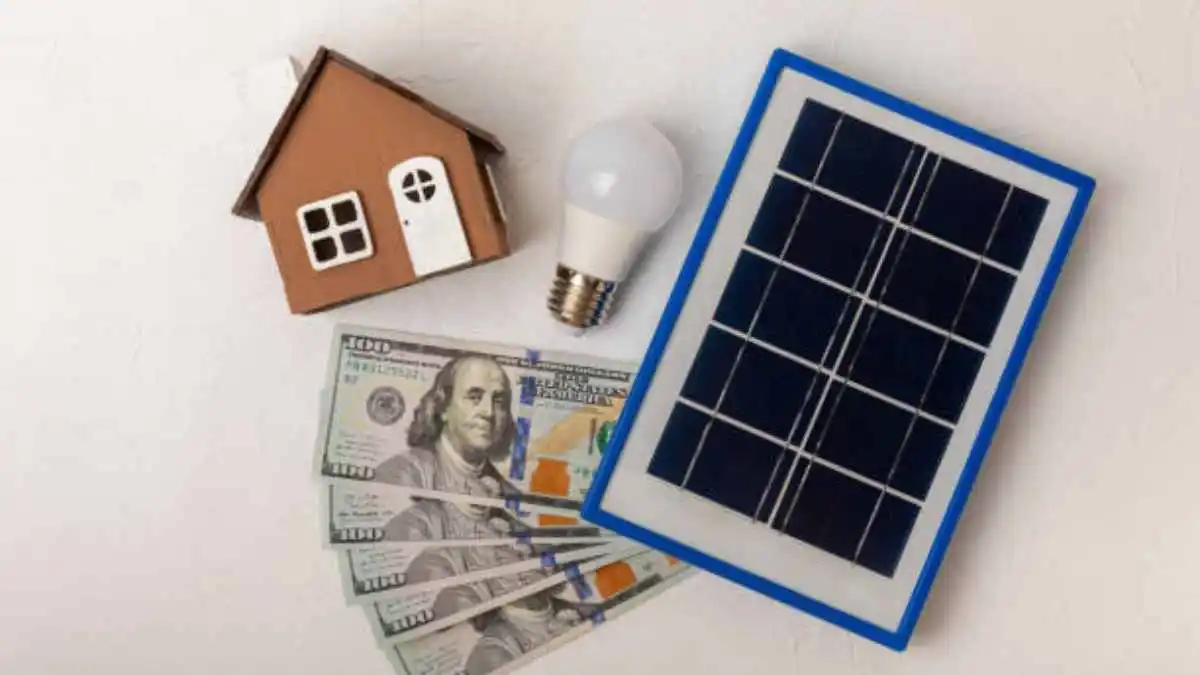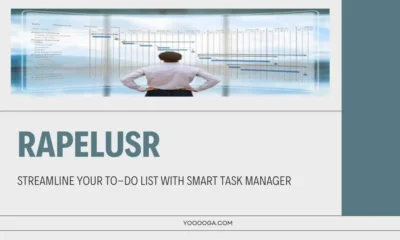HOME IMPROVEMENT
The Advantages of Upgrading to Energy-Efficient Lighting in Your Home

Lighting has a huge impact on the comfort, style, and efficiency of a home. Yet, traditional lighting methods, like incandescent bulbs, are often costly and inefficient compared to today’s energy-saving alternatives. Switching to energy-efficient lighting, such as LEDs and CFLs, offers long-term savings, better performance, and a reduced environmental footprint.
In this article, we’ll explore the many benefits of energy-efficient lighting and how upgrading can transform your home. With professional support from CSK Electric, you can make the switch easily, improving both your home’s functionality and your energy efficiency.
Table of Contents
1. Significant Cost Savings on Energy Bills
One of the primary reasons homeowners switch to energy-efficient lighting is the potential for substantial savings on energy bills. Traditional incandescent bulbs convert only about 10% of the energy they use into light, while the rest is wasted as heat. In contrast, energy-efficient bulbs, like LEDs, are far more effective at turning energy into illumination, consuming less power while producing the same (or better) brightness.
How Energy-Efficient Lighting Reduces Costs
- Lower Wattage, Same Brightness: LEDs and CFLs use lower wattages than incandescent bulbs to produce the same level of brightness. This means that even with regular usage, energy-efficient bulbs draw far less electricity.
- Longer Lifespan: Energy-efficient bulbs last longer, reducing the frequency of replacements and the cost associated with buying new bulbs.
- Fewer Heat Emissions: Since energy-efficient bulbs waste less energy as heat, they don’t contribute as much to home cooling costs, particularly in warmer months.
Over time, these savings can add up significantly, especially in homes with extensive lighting needs or families who rely on lighting for long hours each day.
2. Increased Lifespan and Durability
Energy-efficient lighting options are designed to last much longer than traditional incandescent bulbs. LEDs, in particular, have an average lifespan of 25,000 hours or more, while CFLs last up to 10,000 hours—both far outlasting the typical 1,000-hour lifespan of an incandescent bulb. This increased longevity saves homeowners money and reduces the inconvenience of frequent bulb changes.
Advantages of Long-Lasting Bulbs
- Fewer Replacements Needed
With longer lifespans, energy-efficient bulbs reduce the time and expense associated with constantly replacing burnt-out bulbs, making maintenance easier and more affordable. - Reduced Waste
Fewer replacements mean fewer discarded bulbs, contributing to less landfill waste and a smaller environmental footprint. - Ideal for Hard-to-Reach Areas
Energy-efficient bulbs are perfect for fixtures in hard-to-reach areas, such as high ceilings, stairwells, or outdoor fixtures, where changing bulbs frequently is inconvenient.
With minimal maintenance and longer usage, energy-efficient lighting is a practical and hassle-free solution for homeowners looking to simplify home upkeep.
3. Enhanced Environmental Impact
Switching to energy-efficient lighting isn’t just beneficial for your wallet; it’s a move that supports environmental sustainability. Traditional lighting methods consume more electricity and contribute to higher carbon emissions due to the demand on power plants, many of which rely on fossil fuels.
Environmental Benefits of Efficient Lighting
- Lower Carbon Emissions
Using less electricity reduces the demand for fossil fuels, which means fewer greenhouse gases are released into the atmosphere. Each energy-efficient bulb represents a step toward lowering your carbon footprint. - Reduced Resource Consumption
Since energy-efficient bulbs last longer, fewer resources are required for manufacturing, shipping, and disposal. This conserves materials and energy in the production process. - Mercury-Free Options
Unlike CFLs, which contain a small amount of mercury, LEDs are mercury-free, making them an environmentally friendly choice for the home and safer to dispose of.
By choosing eco-friendly lighting options, you contribute to a more sustainable future while reducing your home’s overall impact on the planet.
4. Improved Lighting Quality and Options
Energy-efficient lighting provides homeowners with a variety of options to enhance the ambiance, function, and aesthetics of their living spaces. Modern LEDs, for instance, come in various color temperatures and brightness levels, allowing you to customize lighting for different rooms and activities.
Benefits of High-Quality Lighting
- Adjustable Color Temperatures
LEDs are available in a range of color temperatures, from warm white (ideal for cozy spaces like bedrooms) to cool white or daylight tones (perfect for workspaces or kitchens). This flexibility allows homeowners to create the ideal atmosphere in each room. - Dimming Capabilities
Many energy-efficient bulbs are compatible with dimmer switches, providing control over brightness. Dimming reduces energy use and extends bulb life, making it a practical addition for spaces where ambiance varies. - Directional Lighting
LEDs and other energy-efficient bulbs provide directional lighting, making them great for task lighting in areas like home offices, kitchens, and workshops. This focused lighting increases comfort and productivity.
With customizable options, energy-efficient lighting can be tailored to meet various needs, transforming the look and functionality of each space in your home.
5. Reduced Heat Emission
Traditional bulbs, particularly incandescent models, emit a significant amount of heat, which can warm up your home and cause discomfort, especially in small or enclosed spaces. Energy-efficient bulbs, on the other hand, release minimal heat, creating a cooler and more comfortable environment.
Benefits of Low Heat Emission
- Cooler Living Spaces
By producing less heat, energy-efficient bulbs help maintain a cooler indoor temperature, which is particularly beneficial during warm months. Reduced heat emission means your air conditioning system doesn’t have to work as hard, potentially lowering cooling costs. - Safer for Enclosed Fixtures
The low heat emission of LEDs and CFLs makes them safer for enclosed fixtures and reduces the risk of overheating. They’re also suitable for use in tight spaces like cabinets or closets. - Longer Bulb Life
Less heat means less stress on the bulb, allowing it to last longer than traditional bulbs that experience quicker wear due to high temperatures.
Lower heat output from energy-efficient bulbs enhances home comfort and safety while minimizing energy costs.
6. Adapting to Smart Home Technology
As more homes incorporate smart technology, energy-efficient bulbs have evolved to integrate seamlessly with these systems. Many modern LEDs are compatible with smart home platforms, allowing homeowners to control lighting remotely or set automated schedules.
How Energy-Efficient Lighting Supports Smart Homes
- Remote Access
Smart LEDs can be controlled through smartphone apps, enabling users to turn lights on or off from anywhere. This is convenient for those who travel frequently or want the security of controlling lights when away from home. - Voice-Activated Controls
With compatibility for systems like Amazon Alexa or Google Assistant, smart bulbs can be controlled using voice commands, adding a layer of convenience. - Energy Tracking
Many smart lighting systems offer energy monitoring features, providing insights into energy use and identifying opportunities for additional savings.
Smart-compatible LEDs make it easy to manage lighting, saving both energy and time while adding convenience and modernity to the home.
7. Easy Installation and Compatibility
Upgrading to energy-efficient lighting is a straightforward process, as LEDs and CFLs are available in a range of sizes and fittings compatible with most fixtures. This means you can replace your existing bulbs with energy-efficient options without the need for extensive renovations or additional fittings.
Quick and Convenient Transition
- Plug-and-Play Replacement
Most energy-efficient bulbs can be installed in existing sockets, making the switch simple. Homeowners can replace bulbs room by room or all at once, depending on preference. - Universal Fit Options
LEDs and CFLs come in standard sizes and shapes, such as A19 for standard fixtures, BR30 for recessed lighting, and PAR38 for outdoor applications. This versatility ensures they’ll fit almost any fixture. - Dimmable and Non-Dimmable Choices
Many LEDs are available in both dimmable and non-dimmable versions, giving homeowners flexibility in lighting control without needing to replace fixtures or switches.
The straightforward installation process makes energy-efficient lighting accessible to everyone, enabling a quick upgrade that provides immediate benefits.
8. Increasing Property Value with Energy-Efficient Upgrades
As energy efficiency becomes a higher priority for homeowners, properties with energy-saving features tend to have increased market value. Upgrading lighting is a simple and cost-effective way to boost a home’s appeal to potential buyers and renters, especially those looking to lower utility expenses.
Property Value Benefits
- Appeal to Eco-Conscious Buyers
With the growing emphasis on sustainable living, homes with energy-efficient lighting are appealing to eco-friendly buyers who prioritize reduced energy consumption. - Low Maintenance Selling Point
Energy-efficient lighting has a long lifespan, meaning that new homeowners won’t have to worry about frequent bulb replacements, adding to the property’s value. - Improved Home Appraisal
Real estate appraisers often consider energy efficiency improvements, and upgraded lighting is one of the easiest ways to enhance energy efficiency and improve appraisal values.
By investing in energy-efficient lighting, homeowners not only save on costs but also increase the marketability of their property.
Conclusion
Upgrading to energy-efficient lighting offers numerous benefits, from significant energy savings to enhanced home comfort and reduced environmental impact. Energy-efficient bulbs last longer, emit less heat, and provide versatile lighting options, making them a valuable addition to any home. Expert electricians can help homeowners make the transition, ensuring that installations are done safely and effectively to maximize benefits.
Switching to energy-efficient lighting is a practical, sustainable choice that enhances the home’s value and supports a greener future. Enjoy lower bills, improved lighting quality, and a reduced carbon footprint—all through the simple act of upgrading your home’s lighting.
-

 GENERAL6 months ago
GENERAL6 months agoChristofle – For Those Who Dream of Family Heirloom Silver
-

 SPORTS8 months ago
SPORTS8 months agoDiscover the World of Football with Streameast: Watch Your Favorite Leagues and Tournaments
-

 GENERAL4 months ago
GENERAL4 months agoUncovering the World of кинокрадко: The Dark Side of Film Piracy
-

 GENERAL2 months ago
GENERAL2 months agoATFBooru: Anime, Gaming, and Subculture Imageboard




























